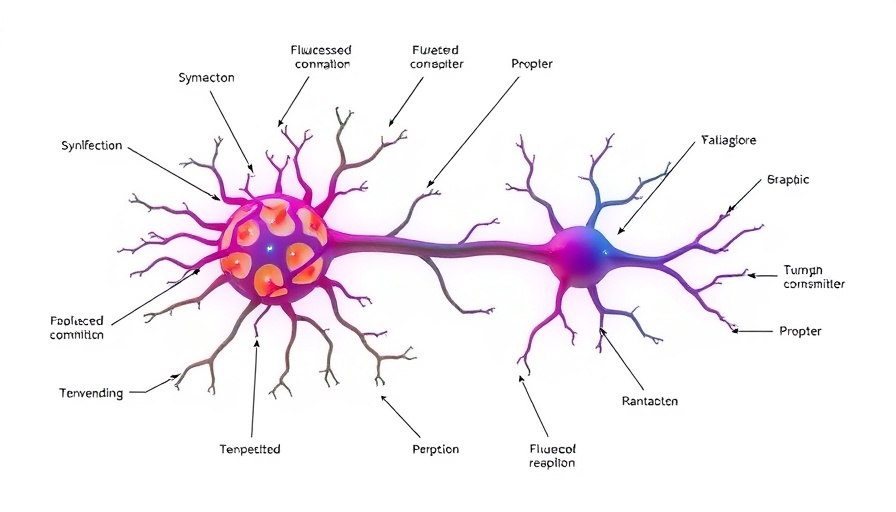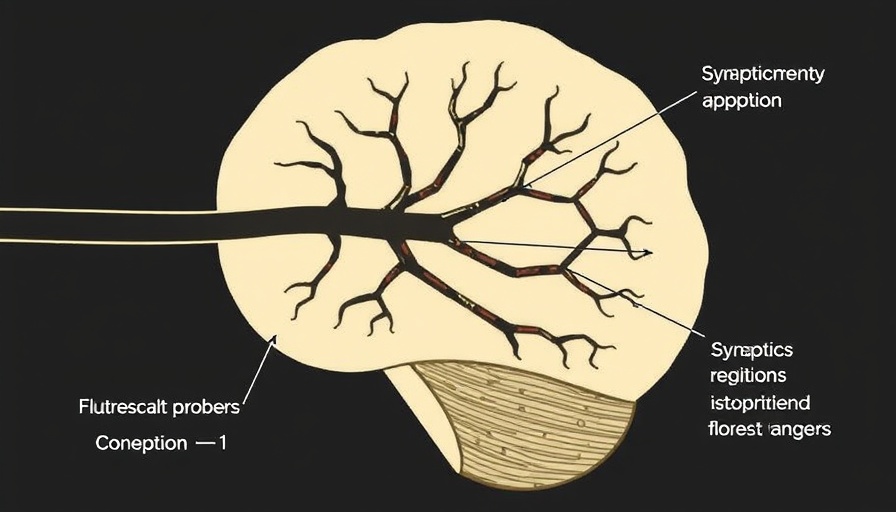
Fluorescent Probes: A New Era in Brain Research
Recent advances in neuroscience have unveiled the potential of fluorescent probes, transforming the landscape of brain mapping. Traditional methods for observing synaptic activity often require complex and invasive procedures.
However, a breakthrough technique now allows researchers to simply 'sprinkle' a fluorescent probe to illuminate active synapses. This method not only accelerates brain imaging but also enhances the precision with which neurobiologists can study synaptic activity—offering valuable insights into cognitive functions and neurological disorders.
Why This Matters to Your Practice
For concierge health practitioners who prioritize state-of-the-art medical trends, understanding these advancements is crucial. This new approach aligns with the growing preference for less invasive techniques in healthcare, which can lead to quicker diagnoses and more effective treatments.
As you incorporate cutting-edge practices into patient care, staying informed about the evolution of brain research can empower you to better address neurological health concerns. Your awareness of these technologies positions you as an informed practitioner, ready to adapt to innovations that benefit your patients.
Understanding the Mechanism
The fluorescence probe functions by binding to specific proteins at synapses and emits light when stimulated. This enables real-time visualization of synaptic activity, revealing not only the locations but also the functional dynamics of neuronal connections.
This technique, while revolutionary, also opens discussions regarding optimization in diverse clinical settings. How can practices adapt this research into measurable patient outcomes? The marriage of technology and medicine showcases the ongoing transformation within the healthcare profession, emphasizing the profound impact that innovations can have on patient care.
Potential Applications in Clinical Practice
With the ability to monitor synaptic activity in real-time, this method can enhance diagnostic accuracy for conditions such as epilepsy, autism, and Alzheimer’s disease. Understanding the dynamics of synaptic communication is pivotal for the development of more targeted therapies.
Additionally, sharing these advancements with patients can foster better communication regarding their neurological health, demonstrating your commitment to staying at the forefront of medical innovation.
Looking Ahead: The Future of Neuronal Imaging
As this fluorescent technique continues to evolve, we may see even more refined applications tailored to understanding brain function and dysfunction. Future developments could potentially usher in technologies that allow for non-invasive synaptic monitoring in everyday clinical practice.
Envision a scenario where patients receive synaptic health assessments as part of routine neurological check-ups. Such advancements could revolutionize how we approach mental health and cognitive disorders, promoting preventative strategies that minimize risk before symptoms arise.
Final Thoughts: What’s Next for Your Practice?
As a health practitioner, your proactive learning about these innovations is essential. Engaging with the latest information not only supports your professional growth but also enhances patient care in your practice.
Ensure that you remain connected with reputable medical sources, attending relevant workshops, and discussions about these groundbreaking techniques. Understanding emerging technologies—and how they can be integrated into your practice—overtly supports your mission of providing exemplary care.
 Add Row
Add Row  Add
Add 






Write A Comment